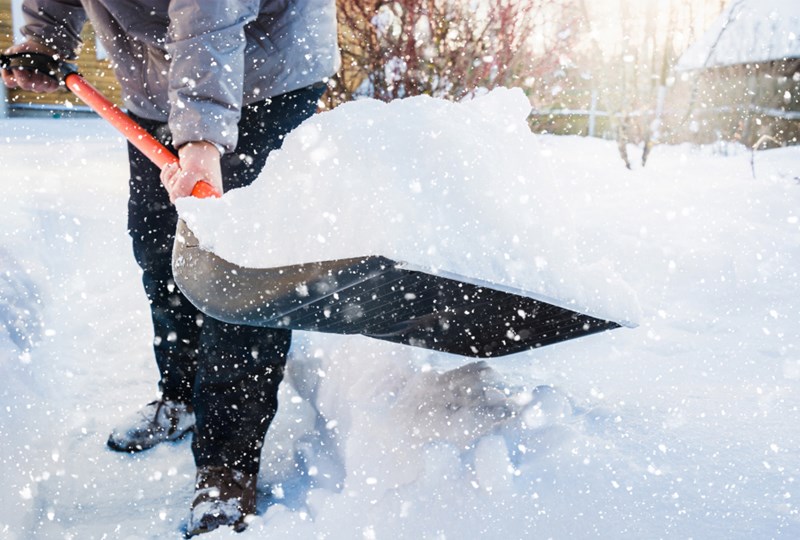
Homeownership can be complicated, but we also think it’s one of the most rewarding ventures out there. In our Ask an Edina Realty Lawyer series, we are hoping to demystify some of the trickier aspects of buying, selling and owning a home.
In this edition, one of our lawyers discusses why homeowners may be legally required to shovel the sidewalk in front of their house — even if it’s technically owned by the city where they live.
Dear Edina Realty Legal,
I’ve heard that I don’t own the sidewalk in front of my house. Apparently, the city owns it. If that’s the case, why do I have to shovel it?
What you’ve heard is most likely correct. Most sidewalks that are adjacent to city streets are actually public property. Cities typically own a right of way that includes not only the street itself, but also the land adjacent to the roadway. This usually includes the sidewalk and, in some municipalities, even extends some distance past the sidewalk.
So, why do homeowners have to shovel a city-owned sidewalk?
According to state law, cities can require homeowners to clear snow and ice from property-adjacent sidewalks. Most cities have used this authority by adopting local laws, called ordinances, that outline the sidewalk upkeep requirements for property owners. Other cities may choose to be responsible for the plowing of all (or at least some) of the public sidewalks.
You should check with your city government to determine the local ordinance, but here are some common stipulations.
Snow removal ordinance
Generally, a snow removal ordinance will require the homeowner to remove snow within a specific period, such as 24 hours after the end of a snowfall event.
Charges and fines
If the homeowner fails to clear the sidewalk in a timely manner, the city may take action to remove the snow and ice itself and charge the owner for the cost. On top of that cost, municipalities may issue a fine. If unpaid, the costs for removing the snow and ice can be assessed to the property and collected with the homeowner’s property taxes.
Placement of cleared snow
Pay attention to where you place the snow as you clear it from your driveway and sidewalk. It is against Minnesota law, as well as many local ordinances, to push snow or ice onto the road. Make sure that any piling of snow does not obstruct the view of drivers on the road — or your view as you leave your driveway.
Liabilities
Because the sidewalk is public property, a homeowner might not be responsible for injuries occurring on it. But beyond legal liability, it’s important to be a good neighbor and local citizen. You don’t want to be the cause of a friend or a neighbor getting injured.
More winter tips for your driveway and walkways
Keep kids near the house
Plows can come through quickly and they can throw snow several feet. Whether your kids prefer snowball fights or constructing forts, teach them to play close to the house and far away from the street.
Get snow emergency alerts
If you park on the street or have guests over after a snowfall, be sure to pay attention to the snow emergency alerts issued from your city. Not only can you get ticketed and/or towed if your car is parked on a snow emergency route, you can also interrupt the flow of street traffic for weeks to come if your street isn’t effectively plowed.
Clear a path to your trash and recycling bins
Have you ever dealt with your trash can’s lid freezing closed in the winter months? Imagine if you were a garbage collector dealing with that hundreds of times each day. Be sure to follow your city’s guidelines for preparing your refuse and recycling, which may include shoveling out a path for your trash collectors and ensuring the bins open and close easily. And of course, you’ll want to be sure that you keep them near the end of your driveway, but out of the path of the plows.
Keep your walkways clear
While you might not face liability for an injury on a sidewalk owned by the city, the same cannot be said for the walkways located on your property and your driveway. Aside from guests visiting your home, you may also have mail carriers and other delivery service personnel walking up to your door each day. It’s crucial that all paths are safe for visitors, so in addition to shoveling, use salt or ice melt to keep your walkways clear and safe.
Get even more winter survival tips, including the best products to buy for your home and car.
The Edina Realty Legal Department serves as in-house counsel for Edina Realty and does not represent private clients. This Insight is not intended to provide legal advice.









 ©2025 Prosperity Home Mortgage LLC®. (877) 275-1762. 3060 Williams Drive, Suite 600, Fairfax, VA 22031. All first mortgage products are provided by Prosperity Home Mortgage, LLC®. Not all mortgage products may be available in all areas. Not all borrowers will qualify. NMLS ID #75164 (For licensing information go to: NMLS Consumer Access at
©2025 Prosperity Home Mortgage LLC®. (877) 275-1762. 3060 Williams Drive, Suite 600, Fairfax, VA 22031. All first mortgage products are provided by Prosperity Home Mortgage, LLC®. Not all mortgage products may be available in all areas. Not all borrowers will qualify. NMLS ID #75164 (For licensing information go to: NMLS Consumer Access at